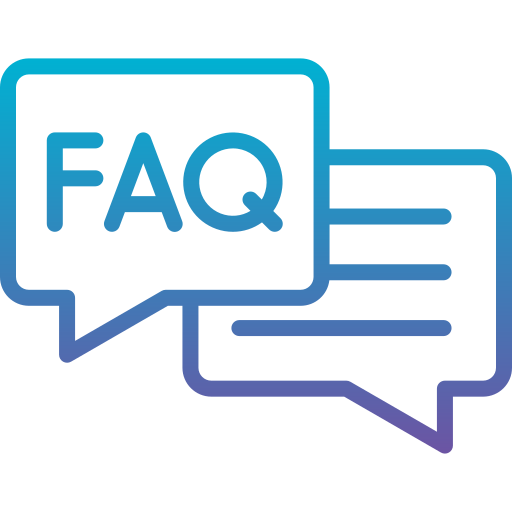
How do I craft a compelling brand story video?
Craft a compelling brand story video by defining clear objectives, analyzing existing assets, and developing a narrative that resonates with your target audience. Consider what makes your brand unique and how you can showcase that visually.
What key elements make a brand storytelling video successful?
Successful brand storytelling videos combine a clear message, engaging visuals, authentic voiceovers, and a strategic narrative structure. Think about how these elements can work together to create a cohesive and impactful story.
How do I define my core message for a brand story video?
Define your core message by identifying the "why" behind your brand. What problems do you solve? What values do you represent? Distill this into a concise statement that resonates with your audience.
How can I visually translate brand values in a video narrative?
Visually translate brand values through thoughtful use of color palettes, animation styles, typography, and imagery. Ensure these elements align with your overall brand identity.
What narrative structures best suit short brand videos?
Common narrative structures for short brand videos include problem/solution, before/after, and emotional journeys. Choose the structure that best suits your message and target audience.
How do I create a resonant brand video for my audience?
Create a resonant brand video by understanding your audience's needs, pain points, and aspirations. Tailor your message and visuals to connect with them on an emotional level.
What video narrative types drive brand engagement?
Engaging video narrative types include testimonials, behind-the-scenes glimpses, and explainer videos. These formats can effectively showcase your brand's value proposition and connect with viewers.
How do I start pre-production for a brand storytelling video?
Pre-production should begin with a detailed brief outlining objectives, target audience, key messages, and desired outcomes. This sets the foundation for a successful video production process.
How do I align my video with my brand marketing strategy?
Align your video with your brand marketing strategy by ensuring it complements your overall messaging and reinforces your brand identity across all platforms.
How can my brand video stand out?
A brand video can stand out through unique visuals, compelling storytelling, and a clear call to action. Consider incorporating innovative techniques and creative elements to capture attention.
How do I choose the right tone for my brand video story?
The right tone depends on your target audience and message. A playful tone might suit a lifestyle brand, while a corporate video may require a more serious approach.
How can I repurpose existing content for brand storytelling?
Repurpose existing content, such as blog posts or social media updates, by transforming them into engaging video narratives. This maximizes your content's reach and impact.
Where can I find inspiration for brand video storytelling?
Find inspiration for brand video storytelling by exploring successful campaigns, analyzing industry trends, and researching innovative video techniques.
How can a video build stronger customer relationships with my brand?
Build stronger customer relationships by showcasing your brand's personality, values, and commitment to customer satisfaction through authentic storytelling.
How do I best use customer testimonials in brand videos?
Customer testimonials build trust and credibility by showcasing real people sharing their positive experiences. Select compelling testimonials that resonate with your target audience. Typical pricing for a 60-second video ranges from $1000-$6000 depending on complexity, with a typical turnaround time of 3-8 weeks.
The Psychology of Brand Storytelling Videos
Understanding a Brand Storytelling Video involves exploring how these narratives impact viewer psychology. They bypass logical processing, speaking directly to emotions and tapping into fundamental human responses to story structure. This deep engagement makes a brand unforgettable, forging a bond far stronger than simple facts or product features ever could.
Narratives activate brain regions associated with pleasure and reward, thanks to dopamine release. This makes the experience enjoyable and enhances focus, leading to better memory retention. Stories also trigger oxytocin, the neurochemical linked to trust and empathy, particularly when authenticity and vulnerability are present. Visually compelling elements accelerate this process; our brains process visuals sixty thousand times faster than text, quickly building familiarity and setting a mood that reinforces the brand's identity.
User-generated content adds another layer of psychological power, leveraging the principle of social proof. Consumers inherently trust the experiences shared by their peers more than brand-created messages. Integrating real customer stories taps into this powerful mechanism, enhancing credibility and influencing purchase decisions by demonstrating genuine connection and satisfaction from others. This authentic social validation resonates deeply.
Narrative transportation draws viewers into the storyworld, subtly influencing attitudes and beliefs as they identify with characters.
Emotional contagion allows audiences to mirror the feelings portrayed, creating a shared human experience with the brand at its center.
Strategic "peak moments" combining strong visuals and emotion are specifically designed to lodge the story firmly in viewer memory.
Interactive videos further amplify engagement, the agency offered triggering additional dopamine release and deeper cognitive processing.
Ultimately, brand storytelling videos harness the innate human wiring for narrative. By connecting on an emotional and psychological level, they build lasting trust, cultivate fierce loyalty, and transform casual viewers into genuine brand advocates.
Why Advids for Brand Storytelling Video?
At Advids, we empower your brand's narrative through captivating Brand Storytelling Videos. Our unique blend of creative storytelling, cutting-edge technology, and proven expertise delivers exceptional results and helps you achieve your business goals. We transform your vision into compelling and effective animations that resonate with your audience.
Transforming Ideas into Engaging Animations:
Customized Brand Storytelling Video Solutions: From explainer videos and character animations to any other style, we tailor each project to perfectly reflect your brand, style, and target audience.
Creative Storytelling Through Animation: Our skilled animators and storytellers craft captivating narratives that engage viewers and inspire action.
Cutting-Edge Brand Storytelling Video Technology: We utilize industry-leading software and techniques to ensure visually stunning videos with a lasting impact.
A Legacy of Success and Client Satisfaction:
12+ Years of Proven Success: With over 3400 clients served, we possess a deep understanding of effective Brand Storytelling Video. We've completed over 315 successful Brand Storytelling Video projects.
Trusted by Industry Leaders: Brands like Razorpay, Ola, Mercedes, the United Nations, Continental, and Mercer rely on our expertise to bring their stories to life.
Client Satisfaction Guaranteed: Our commitment to excellence is reflected in over 109 five-star Google reviews, showcasing our talent, creativity, and dedication to client satisfaction.
A Collaborative Journey to Success:
Collaborative Process: We work closely with you from concept to completion, ensuring your vision is realized in the final animation.
Strategic Communication: Clear and open communication is paramount. We prioritize understanding your needs, target audience, and brand identity to create truly impactful Brand Storytelling Videos.
Ready to unlock the potential of Brand Storytelling Video for your business with the latest video design trends of 2024? Let Advids be your trusted partner in transforming your ideas into engaging and effective animated experiences.
Checkout some of the projects and work our team at Advids has been producing:
What is a Brand Storytelling Video?
A brand storytelling video is a powerful marketing tool that uses narrative to connect with your audience on an emotional level, building brand awareness, generating leads, and driving sales. It's a way to share your brand's story, values, and mission in a compelling and engaging way, creating a lasting impression on viewers.
These videos can be used for a variety of purposes, such as introducing your brand to a new audience, showcasing the benefits of your product or service, or building a sense of community around your brand. By using real-life stories, customer testimonials, and behind-the-scenes glimpses, you can create a more authentic and relatable experience for your viewers.
What do top Brand Storytelling Videos have in common?
Mastering brand storytelling videos requires a strategic approach focusing on emotional connection and clear messaging.
Compelling Narrative: Use a human-centric story with relatable characters and a clear conflict resolution. Focus on emotional impact.
- Target Audience: Create buyer personas to tailor messaging and visuals to specific needs and desires. Deeply understand their motivations.
- Brand Value Proposition: Highlight the unique benefit your brand offers, focusing on the transformation it provides. Emphasize the "why."
- Visual Brand Consistency: Use a consistent color palette, typography, and imagery to reinforce brand recognition. Maintain a unified look and feel.
- Emotional Resonance: Tap into universal emotions like joy, hope, or inspiration to create a lasting connection. Use powerful imagery and music.
- Problem & Solution Focus: Show, don't just tell. Visually demonstrate the problem and how your brand provides a solution. Use clear visuals.
- Authentic Characters: Develop characters that are believable and relatable, reflecting your target audience's values and aspirations. Show real people.
- Story Structure: Follow a classic three-act structure (setup, confrontation, resolution) for a satisfying narrative arc. Maintain a clear flow.
- Visual Style: Use a distinct visual style that reflects your brand's personality and resonates with your target audience. Create a memorable aesthetic.
- Clear Call to Action: Make the next step crystal clear, using strong verbs and a compelling visual cue. Provide a clear path forward.
What makes Brand Storytelling Video effective?
Powerful brand storytelling videos connect emotionally, achieving marketing objectives. For instance, narratives about brand origins, overcoming adversity, or customer success stories resonate deeply. Visually compelling storytelling, using cinematography and editing techniques, evokes strong emotional responses. A strategically placed and compelling call to action, integrated seamlessly into the narrative, drives conversions.
Relatable characters, embodying brand values, create strong emotional connections and improve memorability. Subtly integrating the brand message into the narrative, without being overtly promotional, strengthens brand identity. Thorough pre-production includes detailed audience research, competitor analysis, and comprehensive storyboarding to ensure a cohesive and impactful final product.
Precise pacing and skillful editing techniques, such as jump cuts or slow motion, maintain viewer engagement and amplify emotional impact. Strategic music and sound design, carefully chosen to complement the narrative, enhances emotional resonance and memorability. Analyzing video performance metrics informs future content strategy and optimization. Ultimately, effective brand storytelling videos forge lasting connections, building brand loyalty and driving tangible business results.
How long should your Brand Storytelling Video be?
Master brand storytelling video length by aligning video type, target audience, and desired funnel stage.
Pre-production Considerations for Determining Video Length:
- What's the core brand message?
- Who is the ideal viewer?
- What key benefits need showcasing?
- Which animation style best suits the brand?
- What platform will host the video?
- Does the video need a narrator?
- What's the desired viewer impact?
Brand storytelling video length guide
| Brand Storytelling Types | Video Length | Use Case | Funnel |
|---|
| Explainer Video | 60-90 seconds | Concisely explains a complex product or service using simple visuals and narration, potentially incorporating whiteboard animation style for clarity. Targets a broad audience. | Awareness |
| Animated Screen Recording | 45-60 seconds | Showcases software features or processes, highlighting key benefits through engaging animation. Ideal for demonstrating user flows. | Consideration |
| Kinetic Typography | 30-45 seconds | Emphasizes key brand messages and values through text animation, creating a memorable and impactful short video. Minimalist style works well. | Awareness |
| 2D Animation | 90-120 seconds | Tells a compelling brand story through engaging characters and scenarios, allowing for more detailed narrative. Cartoon or illustrative styles are effective. | Consideration |
| Talking Head | 60-90 seconds | A personable presenter connects with the audience, building trust and credibility. Direct and authentic, ideal for building rapport. | Decision |
How to create Brand Storytelling videos?
Crafting compelling brand storytelling videos requires a strategic approach that prioritizes audience connection and emotional resonance. Mastering the pre-production and production phases is crucial for creating videos that not only inform but also inspire action.
* Audience Definition - Deeply understand their needs, pain points, and aspirations to create a truly resonant story.- Brand Story - Highlight unique aspects of your brand journey, focusing on human connection and emotional moments.
- Narrative Arc - Employ narrative techniques like conflict and resolution to create a captivating and memorable experience.
- Storyboard Creation - Use detailed storyboards to ensure visual consistency and emotional impact throughout the video.
- Format Selection - Align the format with the story's tone and length, optimizing for audience engagement on chosen platforms.
- Visuals Capture - Use cinematic techniques and evocative imagery to create a visually stunning and emotionally engaging experience.
- Video Editing - Employ pacing and editing techniques to build suspense, create emotional peaks, and maintain audience interest.
- Video Promotion - Utilize targeted advertising and social media strategies to reach the right audience at the right time.
- Results Tracking - Analyze data to understand audience engagement and refine future video strategies for improved ROI.
- Talent Casting - Choose actors who can authentically portray emotions and connect with the audience on a personal level.
The Importance of Brand Storytelling in Marketing
Having explored various brand storytelling video examples, let's discuss why this approach is crucial for marketing. Brand storytelling isn't just about promoting products; it's about forging genuine connections. We connect with audiences by sharing values, building trust, and creating emotional resonance that transforms viewers into loyal customers. Effective brand storytelling video examples show how this translates into tangible results.
Brand storytelling offers a powerful way to cut through the noise and connect with your audience on a deeper level. brand video case studies demonstrate the power of storytelling to drive conversions and build brand loyalty. By crafting compelling narratives, we can humanize our brands, making them more relatable and memorable. This approach fosters trust, differentiates us in crowded markets, and ultimately drives business growth.
- Builds Trust and Credibility: authentic stories humanize brands, fostering trust among audiences. For instance, a video showcasing the founders' journey and passion can resonate deeply with viewers.
- Drives Engagement and Conversions: Engaging narratives capture attention and influence purchase decisions. Think about a video demonstrating how a product solves a customer's problem in a relatable way.
- Enhances Brand Perception and Recall: Storytelling shapes positive brand image and improves message retention. A consistent brand narrative across different platforms reinforces key values and builds stronger brand recognition.
- Fosters Long-Term Growth and Loyalty: Emotional connection cultivates loyalty and advocacy. When customers feel connected to a brand's story, they're more likely to become repeat buyers and brand ambassadors.
Ultimately, brand storytelling is an investment in long-term brand growth and customer relationships. It's about creating a lasting impact that goes beyond a single transaction.
Types of Brand Storytelling Videos
Now that we understand the power of brand storytelling, let's explore the diverse video formats that can bring these narratives to life. From concise explainers to immersive documentaries, each type offers unique strengths for different marketing goals. We'll discover how these formats can engage your audience and amplify your message.
Choosing the right video type depends on your specific message and target audience. A short, animated explainer might be perfect for introducing a new product, while a live-action documentary could be ideal for showcasing your brand's history and values. Let's dive into the possibilities.
- Explainer Videos: simplify complex ideas with clear visuals, often using whiteboard animation for clarity. These are great for product demos and brand introductions.
- Animation: From short brand storytelling video examples using 2D animation to engaging explainers, animation brings narratives to life and simplifies abstract concepts. Brand animation examples showcase their versatility.
- Testimonial and Case Study Videos: build trust and demonstrate value through authentic customer stories and successful client projects.
- Brand Storytelling: Craft compelling narratives through various formats like documentaries, which share brand history and mission, or behind-the-scenes videos, offering glimpses into brand operations. Live-action videos capture real-world scenarios, adding authenticity, while talking head videos build rapport with direct, personable presentations. Social media videos, tailored for platform-specific audiences, offer short, engaging content.
By understanding these video types, we can choose the best format to connect with our audience and achieve our marketing objectives. Each format offers a unique way to tell our brand story and leave a lasting impression.
Reviewing Brand Storytelling Video Proposals
When reviewing video proposals, we need to ensure they capture the essence of our brand and resonate with our target audience. A compelling marketing story video goes beyond simply listing features and benefits; it creates an emotional connection that transforms viewers into loyal customers. Think about engaging brand storytelling video examples that have resonated with you. What made them memorable?
How does the proposed video achieve a similar impact? Does it clearly define the target audience and their needs? Does the narrative align with our brand values and showcase our unique selling proposition in a compelling way? Is the chosen format appropriate for the story and the platform where it will be shared?
- Does the proposal demonstrate a clear understanding of our brand's story and how it connects with our target audience?
- Does the proposed narrative arc create a captivating and emotionally resonant experience for viewers?
- Are the visuals and overall aesthetic consistent with our brand identity, creating a cohesive and memorable impression?
- Does the proposal include a realistic budget, timeline, and a clear plan for measuring the video's success?
By carefully considering these aspects, we can ensure that the chosen video proposal aligns with our overall marketing strategy and effectively communicates our brand story to the world.
Post-Production for Brand Storytelling Videos
Post-production is where the raw footage transforms into a captivating brand story. It's about refining visuals, enhancing audio, and ensuring every element contributes to a powerful narrative. We'll explore key post-production techniques to maximize your video's impact. Think about how animated brand storytelling video examples use various techniques to bring their stories to life.
Post-production isn't just technical; it's about amplifying the emotional core of your story. Imagine how music can evoke joy or suspense, how color grading can create a specific mood, or how visual effects can add a touch of magic. These techniques work together to create an immersive experience for your audience.
- Sound Design & Music: Carefully chosen music and sound effects can amplify emotions, build suspense, and create a memorable auditory experience. Imagine a heartwarming story with gentle background music versus a fast-paced action sequence with dramatic sound effects.
- Color Correction & Grading: Color correction ensures visual consistency, while color grading sets the mood and reinforces your brand's visual identity. Warm tones evoke nostalgia, while cool tones convey a modern feel.
- Motion Graphics: Animated elements can highlight key messages, data, and brand elements, making complex information more digestible. Explainer videos for brands often use motion graphics to simplify product features.
- Versioning for Platforms: Optimize your video for each platform. A square video might work best on Instagram, while a widescreen format suits YouTube. Consider aspect ratios and technical specifications for optimal viewing.
By mastering these post-production techniques, we can transform raw footage into polished narratives that resonate with our audience, leaving a lasting impression.
Analyzing Brand Storytelling Video Performance
Analyzing video performance goes beyond vanity metrics. It's about understanding how your story resonates with your audience and drives meaningful action. We're not just counting views; we're measuring the depth of connection we're building. Think about those compelling business narrative films that stick with you long after the credits roll. That's the kind of impact we're aiming for. Let's explore how to gauge that impact effectively.
Remember, data isn't just numbers; it's a window into your audience's hearts and minds. By understanding what resonates with them, what makes them laugh, cry, or share, we can refine our storytelling and forge even deeper connections. Consider how successful brand storytelling video examples B2B leverage data to understand their audience and tailor their content accordingly.
- Engagement Beyond Numbers: Don't just track likes and shares. Dive deeper into watch time and comments to understand what truly captivates your audience. Are they connecting with your characters? Are they inspired by your message? These insights are gold.
- Conversion as a Conversation: Conversions aren't just about sales; they're a continuation of the conversation you started with your video. Are viewers clicking through to your website, signing up for your newsletter, or reaching out to learn more? These actions demonstrate genuine interest.
- Data-Driven Storytelling: Use platform analytics and A/B testing to refine your approach. Experiment with different thumbnails, titles, and calls to action to see what resonates best. This is where data and creativity intersect.
- The Long View: Building a brand isn't a sprint; it's a marathon. Track your video's performance over time to understand its lasting impact on brand awareness and customer loyalty. Are viewers returning to your content? Are they becoming brand advocates?
By analyzing these key metrics, we can transform data into actionable insights, continuously refining our storytelling and building stronger connections with our audience.
Author & Editor Bio
A video producer with a passion for creating compelling video narratives, Jai Ghosh brings a wealth of experience to his role. His background in Digital Journalism and over 11 years of freelance media consulting inform his approach to video production. For the past 7 years, he has been a vital part of the Advids team, honing his expertise in video content planning, creation, and strategy.
His collaborative approach ensures that he works closely with clients, from startups to enterprises, to understand their communication goals and deliver impactful video solutions. He thrives on transforming ideas into engaging videos, whether it's a product demo, an educational explainer, or a brand story.
An avid reader of modern marketing literature, he keeps his knowledge current. Among his favorite reads from 2024 are "Balls Out Marketing" by Peter Roesler, "Give to Grow" by Mo Bunnell and "For the Culture" by Marcus Collins. His results-driven approach ensures that video content resonates with audiences and helps businesses flourish.




